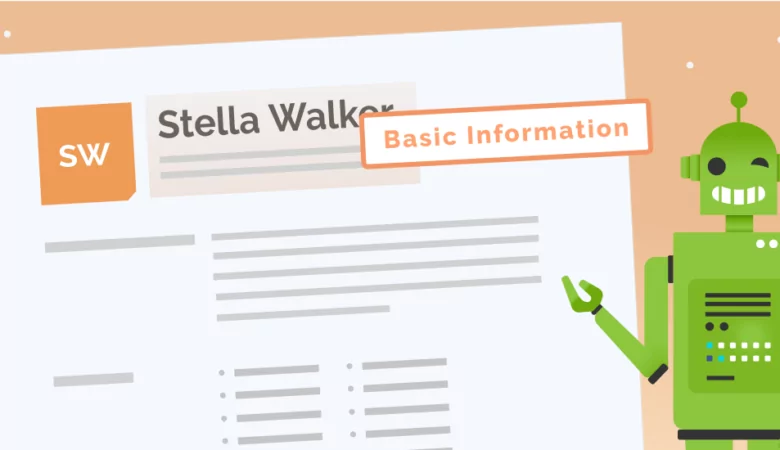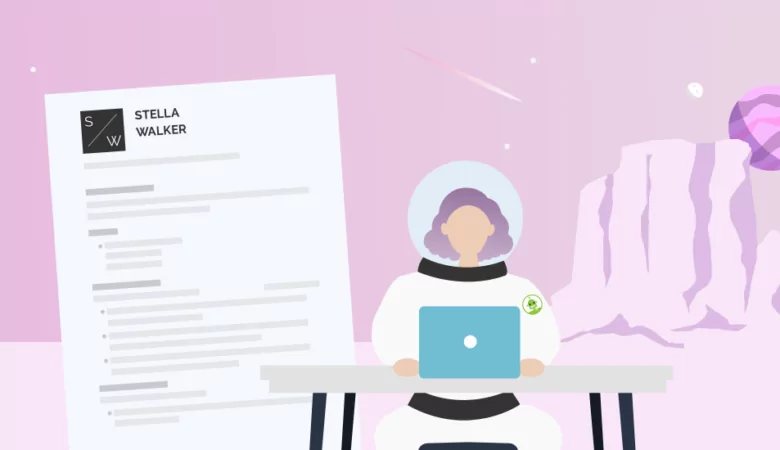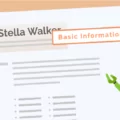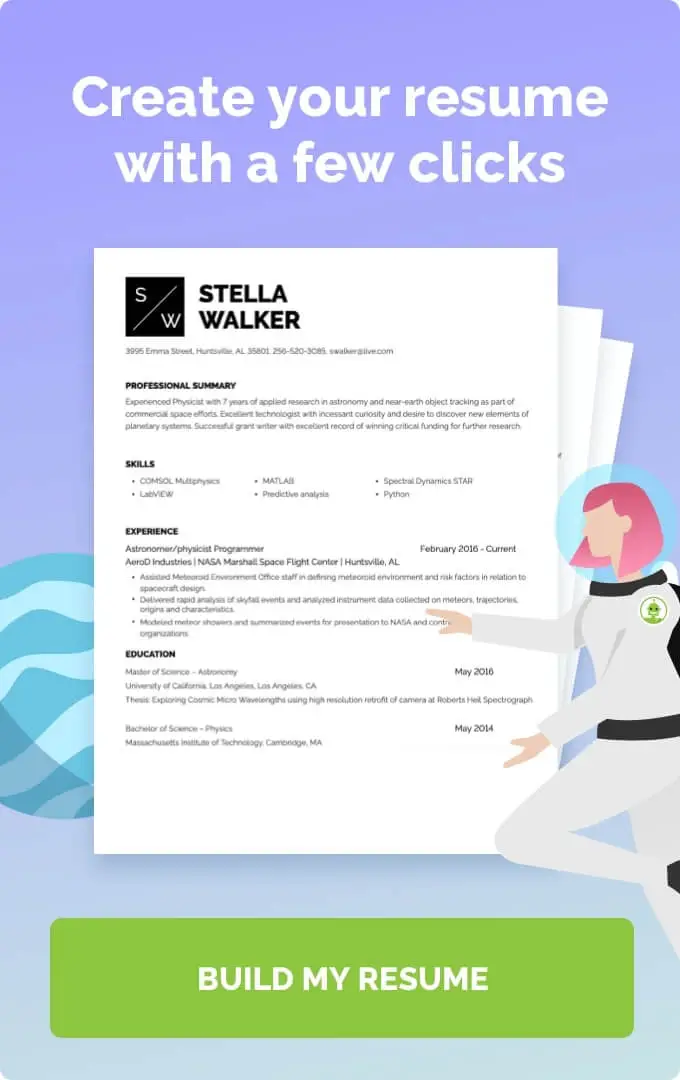Using the right resume template can help your job application to stand out from the rest, especially if you customize it to suit your needs! Here’s what you need to know.
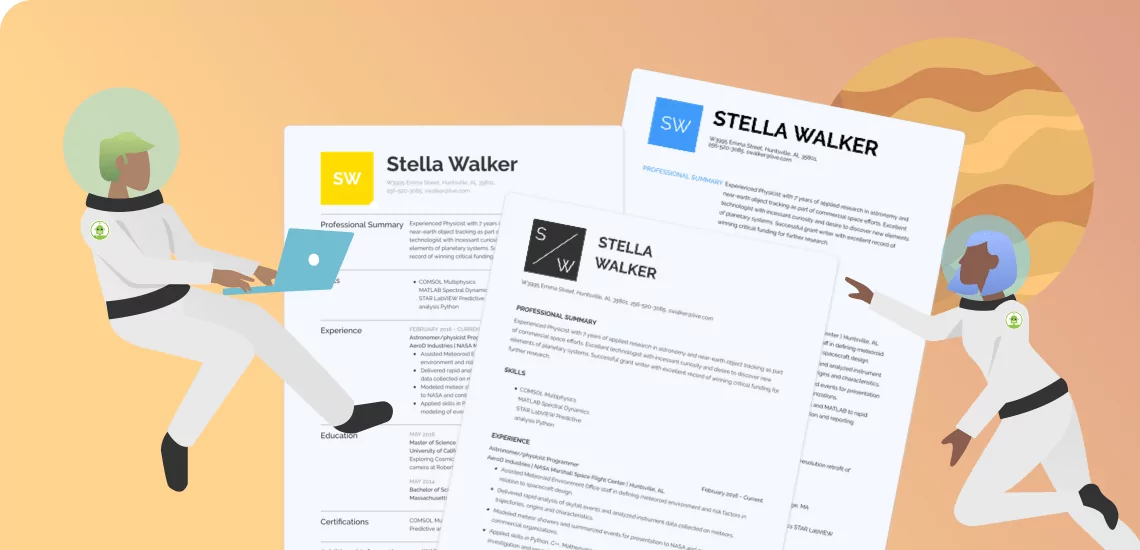
How to Choose the Best Resume Template for You
Best Resume Templates
In a crowded job market, a great resume is the best tool that a job seeker has at their disposal. Your resume will make up the largest portion of your job application and, therefore, should display the very best of your skills and experiences. The right content is not all that matters in a resume; the right design and format are crucial if you want to make a strong first impression.
What is the Difference Between a Resume Format and a Resume Template?
Your resume will have to follow a certain format (or structure) in order to be coherent and pass through applicant tracking systems (ATS) that employers often use to scan resumes. There are three main resume formats that you can choose from when undertaking a job application:
-
Chronological format
A chronological resume format is the most traditional and widely accepted. This format prioritizes professional experience and features work history at the top of the page. If you work in traditional industries like law or medicine, then this will be the best format for you.
-
Functional format
A functional resume format is one that prioritizes the soft and hard skills that a job seeker has. In this format, the skills section is the largest part of the resume, and it is located at the top of the page. This format is best for people who are first time job-seekers, or have an inconsistent or skimpy work history.
-
Combination format
A combination resume or hybrid resume is one that gives a balanced view of a job seeker’s work experience and skills. This is a strong resume format for anyone who has a limited but relevant work history and plenty of relevant skills.
Each of these three formats can be used in conjunction with a professional resume template. Resume templates are like decorative frames that you can slot your resume into. In short, resume formats determine how the content of your resume is structured, while resume templates determine how the finished article will look when it lands on a recruiter’s desk. Each format and template has its own benefits.
What are the Main Kinds of Resume Templates?
When you use a free online resume builder such as the one offered by ResumeNerd, you will gain access to a range of different resume templates featuring a wide range of design “looks”. These are the main types of single-page resume templates that are available online:
- Modern
A modern resume template is right for job seekers who are applying for a professional job title in an industry like software development, engineering, and cyber security. These templates often balance bright and modern color schemes with more traditional layouts and fonts.
- Minimalist
A minimalist resume template is one that does not feature bright color schemes or intricate design elements. These are very straightforward resume templates, and thus are best for traditional industries like medicine and law.
- Creative
A creative resume template is one that uses a lot of eye-catching colors and design features. This kind of template may even feature graphs or visual representations of information where they are relevant. These resume templates are great for people who work in creative roles like graphic design.
What Should a Resume Include?
Whether you’re using a resume builder or creating a resume from scratch on your own, you should include the following sections to create an effective, persuasive, ATS-friendly resume:
-
Header
Your header should include your full name, phone number, and any other up-to-date contact information. You can also include your LinkedIn details.
-
Resume summary or objective
Your resume should also include a summary or objective statement. A resume summary should be a sum-up of your most relevant skills and qualifications, while a resume objective statement should be a statement of your career goals. The first is best for people who have many years of experience while the second is better for recent graduates.
-
Work experience
Your resume should include up to ten years of work experience, presented in reverse chronological order. Include the job title, the company name, and your employment dates, as well as your main achievements in that role.
-
Skills
Every resume should have a skills section with up to a dozen relevant hard (technical) and soft (intangible or interpersonal) skills.
-
Education
The education section should contain information about your most advanced and relevant academic achievements.
The order of these sections will depend on your resume format. You can also include additional sections for professional certifications, internships, and volunteer work. Remember, your resume should showcase the best that you have to offer to potential employers.
FAQ: Resume Templates
Yes. The appearance and design of your resume are as important as knowing how to write your resume well. The average hiring manager will only look at a resume for a few seconds before deciding whether to consider it in full. This means that an attractive, easy-to-scan design is all-important.
According to the design experts at Canva, there are certain fonts that you should avoid and certain ones that are just right for resumes and cover letters. Gimmick fonts like Brush Script and Papyrus rank amongst the worst choices, while Garamond and Didot are some of the best. Whichever font you choose, make sure that it's the default font on Microsoft Word, as custom fonts will not always transfer well. Your chosen font should also be clear and legible to ensure that your resume ranks well in applicant tracking systems.
Yes. Using a similar style for your cover letter and resume is important, as hiring managers will notice these small details. Consistency will make a good first impression and show that you are professional and detail-oriented.


